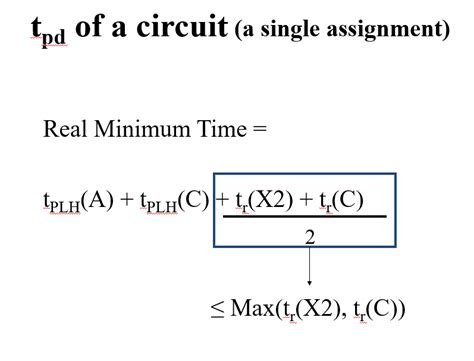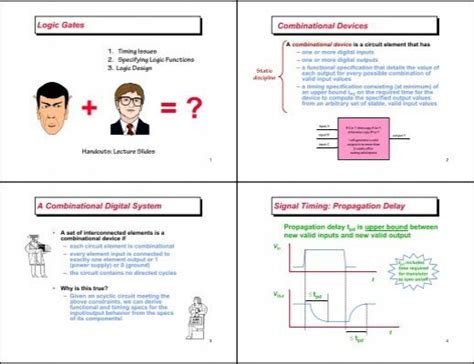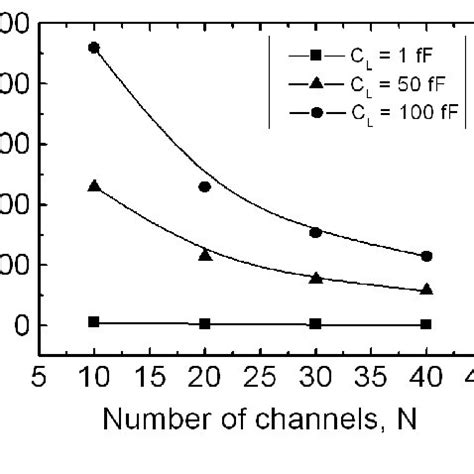Understanding Propagation Delay in Digital Circuits
Propagation delay is a critical concept in the world of digital circuits and electronic systems. It refers to the time it takes for a signal to travel from one point to another within a circuit or system. This delay is an inherent property of all electronic components and can have significant implications for the performance and reliability of digital systems.
Factors Affecting Propagation Delay
Several factors contribute to propagation delay in digital circuits:
- Physical distance: The longer the distance a signal needs to travel, the greater the propagation delay.
- Circuit complexity: More complex circuits with a higher number of components will introduce more propagation delay.
- Operating frequency: Higher frequencies result in shorter signal wavelengths, which can increase the impact of propagation delay.
- Material properties: The dielectric constant and conductivity of the materials used in the circuit affect the speed at which signals propagate.
Calculating Propagation Delay
Propagation delay can be calculated using the following formula:
Propagation Delay = Distance / Velocity
Where:
– Distance is the length of the path the signal needs to travel
– Velocity is the speed at which the signal propagates through the medium (typically around 2/3 the speed of light for copper traces)
For example, if a signal needs to travel 10 cm through a copper trace, the propagation delay would be:
Propagation Delay = 0.1 m / (2/3 * 3 x 10^8 m/s) ≈ 0.5 ns
Impact of Propagation Delay on Digital Systems
Timing Violations
Propagation delay can cause timing violations in digital circuits. If the delay is too long, signals may not arrive at their destination in time, leading to incorrect operation or system failure. This is particularly important in synchronous systems, where all components operate based on a common clock signal.
Maximum Operating Frequency
The maximum operating frequency of a digital system is limited by the propagation delay of its components. If the clock period is shorter than the longest propagation delay in the system, signals may not have enough time to settle before the next clock edge, causing errors.
Signal Integrity
Propagation delay can also affect signal integrity. As signals travel through a circuit, they can become distorted due to factors such as impedance mismatches, reflections, and crosstalk. Longer propagation delays provide more opportunities for these effects to accumulate, reducing signal quality.

Techniques for Managing Propagation Delay
Several techniques can be employed to manage propagation delay in digital systems:
Pipelining
Pipelining is a technique that breaks down a complex operation into smaller stages, allowing multiple operations to be performed simultaneously. By dividing the circuit into shorter segments, pipelining reduces the impact of propagation delay on the overall system performance.
Delay Balancing
Delay balancing involves adding intentional delays to certain paths in a circuit to ensure that all signals arrive at their destination at the same time. This can be achieved using delay elements such as buffers or inverters.
Impedance Matching
Impedance matching is the practice of ensuring that the impedance of a signal path matches the impedance of the source and destination components. This reduces reflections and improves signal integrity, minimizing the impact of propagation delay.
Careful PCB Layout
Proper PCB layout techniques can help minimize propagation delay. This includes using shorter traces, avoiding unnecessary vias, and properly terminating signals. Additionally, using higher-quality materials with lower dielectric constants can reduce the propagation delay.

Real-World Applications
Understanding and managing propagation delay is crucial in various real-world applications:
High-Speed Communication
In high-speed communication systems, such as Ethernet or PCIe, propagation delay can limit the maximum data rate achievable. Techniques like equalization and pre-emphasis are used to compensate for the effects of propagation delay and maintain signal integrity over long distances.
Timing-Critical Applications
In applications where timing is critical, such as automotive systems or industrial control, propagation delay must be carefully managed to ensure proper operation. This may involve using specialized components with low propagation delay or employing techniques like delay balancing and pipelining.
High-Performance Computing
In high-performance computing systems, such as supercomputers or data centers, minimizing propagation delay is essential for achieving the highest possible performance. This involves using advanced packaging techniques, such as 3D stacking or silicon interposers, to reduce the distance signals need to travel.

Frequently Asked Questions (FAQ)
-
What is the difference between propagation delay and gate delay?
Propagation delay refers to the time it takes for a signal to travel from one point to another in a circuit, while gate delay specifically refers to the delay introduced by a single logic gate. -
How does temperature affect propagation delay?
Temperature can affect propagation delay by changing the electrical properties of the materials in a circuit. Higher temperatures generally increase propagation delay, while lower temperatures decrease it. -
What is the relationship between propagation delay and clock skew?
Clock skew refers to the difference in arrival times of a clock signal at different parts of a circuit. Propagation delay is one of the main contributors to clock skew, as different paths may have different delays, causing the clock signal to arrive at different times. -
Can propagation delay be completely eliminated?
No, propagation delay is an inherent property of all electronic systems and cannot be completely eliminated. However, it can be minimized and managed using various techniques, such as those discussed in this article. -
How do you measure propagation delay in a real circuit?
Propagation delay can be measured using specialized equipment, such as oscilloscopes or time-domain reflectometers (TDRs). These tools allow you to observe the time it takes for a signal to travel from one point to another in the circuit.
In conclusion, propagation delay is a fundamental concept in digital circuits that can have significant implications for the performance and reliability of electronic systems. By understanding the factors that contribute to propagation delay and employing appropriate management techniques, designers can create robust and efficient digital systems that meet the demands of modern applications.

No responses yet